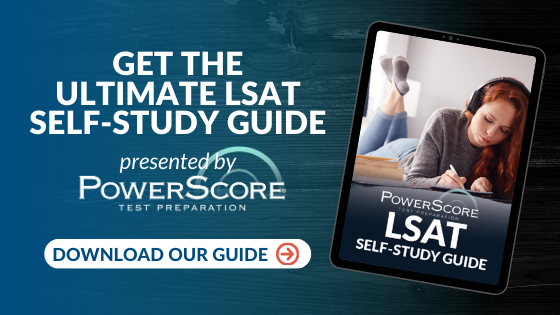If you’ve spent much time with Logical Reasoning on the LSAT, you’ve recognized that the answer choices, right and wrong, are masterfully crafted. The test makers are unbelievably adept at disguising correct answers, and making the incorrect options look extremely attractive. Fortunately there’s a step in the question-attack process designed specifically to help you navigate through the answers: Prephrasing.
Recapping Part I
Since we go over how prephrasing works in Part I, I’ll simply sum it up here. Prephrasing more or less means predicting what you know to be true about the correct answer choice before you begin to examine the answers. Regardless of how precise or definitive your prediction may be, a good prephrase gives you a powerful filter to use as you move from A to E. Of course, context and question type generally dictate how precise you can be. Since you know exactly what to expect from the correct choice, you can therefore recognize it more easily when you see it.
Again, I CANNOT stress enough the importance of prephrasing for every single LR question that you encounter on the LSAT. It is a crucial step that you cannot afford to skip. But hopefully you know that already. The purpose of this discussion is to give you some insight into how to become better at prephrasing. This will give you a method by which you can gain complete mastery of this critical skill.
Honing Your Skills
Here’s what I used to do to really hone my prephrasing abilities. It’s an easily duplicated drill that will make this crucial practice a natural, intuitive part of your LR attack. Take a section of Logical Reasoning, 25 or so questions, and cover every question’s answer choices with a Post-it Note. This will essentially prevent you from seeing any of the answers.
Then go through the questions as you normally would: stimulus first focusing on argumentation (when present) and the strength/nature of the language used, identifying question stems and the task presented, and, finally, making a prediction about what you know the correct answer choice will say or do. However, instead of then moving through the answers to see which choice best matches your prephrase, simply jot down your prephrase on the Post-it covering the answers. Try to make it as powerful and precise as possible, without ever going beyond what you know to be true.
As we’ve discussed, at times you’ll find that you can predict the correct answer almost verbatim. Other times your prephrase will only be about the nature of the correct choice and what you know it will accomplish (for Weaken or Strengthen, for instance), the argumentative elements you know it must mimic (i.e. Parallel Reasoning), etc. Regardless, notate your prephrase for each question. Then complete the entire section in that fashion without removing any of the Post-its.
Once you have your prephrase written for each question, go back to the first question. Remove the Post-it, and, without re-examining the stimulus or question stem, simply use your prephrase notes to evaluate the answer choices. I imagine what you’ll find is that for some question your prediction is spot on and the correct answer will jump out, while for others you’ll be able to eliminate a few answers but your prephrase will still leave you a bit uncertain as to which choice is correct. But don’t let your initial performance overshadow the real purpose of this exercise.
Always Room to Improve
The key is that for EVERY question you need to consider what you wrote and what you could/should have done to make it more powerful. Really deconstruct the correct answer choice for each question, and ask yourself how you could have improved your prephrase to better capture the essence of that choice. How could you have been more accurate? How could you have better anticipated the test makers’ actions? Write down your improved prephrase next to your original one and compare the two. Consider how far off you were and how you could have been closer. Go through the entire section analyzing your prephrases and comparing them to the credited answer choices. Adjust them so that they make for a better lens through which the correct choice can be seen more clearly.
Then take another Logical Reasoning section and do it again. And again. And….again.
What you’ll quickly discover is that prephrasing is a learnable skill, like nearly everything having to do with improving your performance on the LSAT. With time and dedicated practice your prephrases will become more accurate and, ultimately, more powerful in their ability to separate the correct answer choice from its competition. And that’s what mastery of this test is all about. It’s not just finding the correct answer, but knowing the correct answer before you even start looking for it.



Leave a Reply